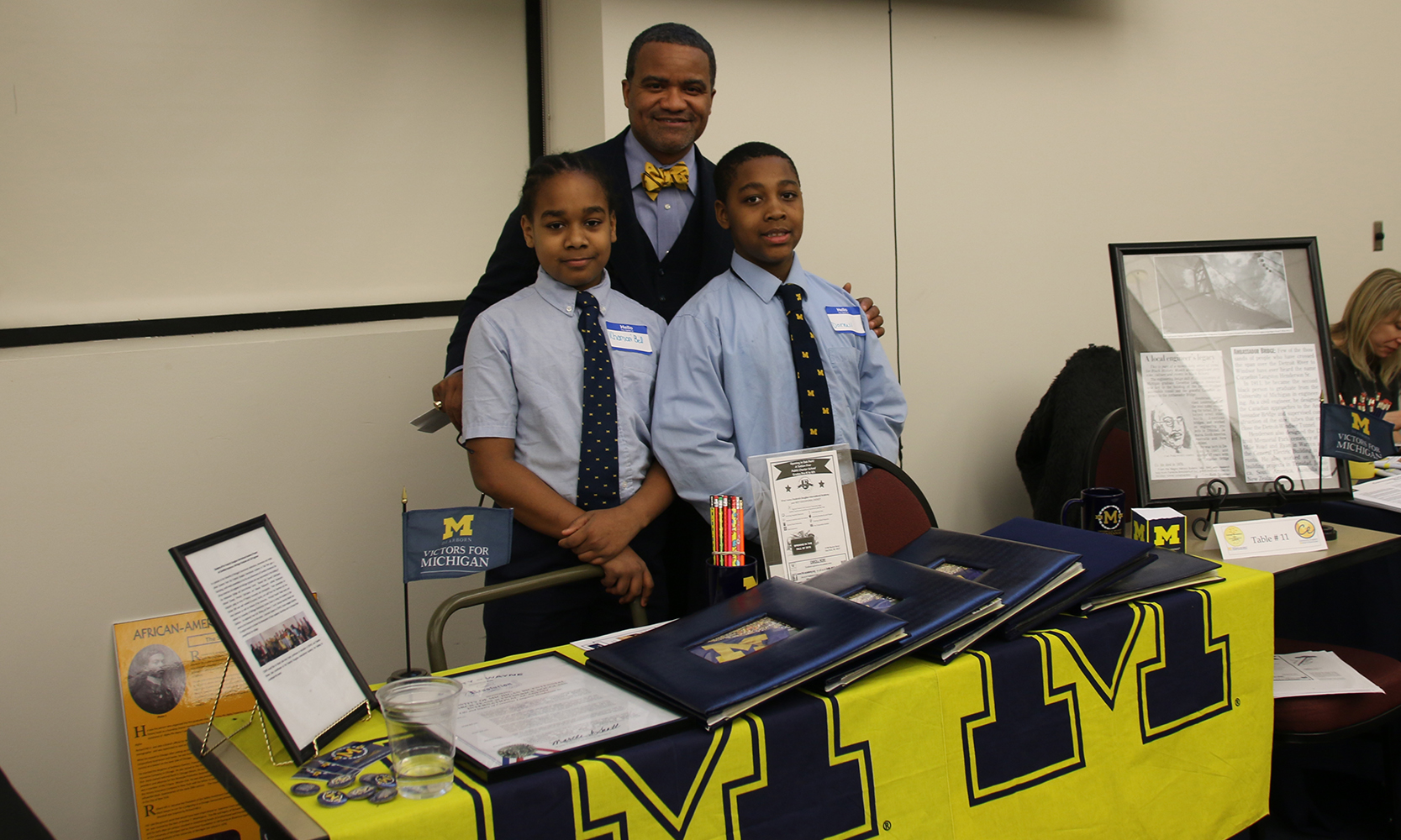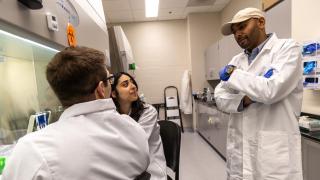
Darnell Cobb-Spears and Khamari Bell stood confidently behind their presentation table at UM-Dearborn’s Engagement Day earlier this year. Like most of the other presenters that day, they had prepared eye-catching visual aids and talking points on their research subject.
“Have you heard of Cornelius Langston Henderson?” Cobb-Spears asked as attendees passed by.
“He was the second African-American to graduate from University of Michigan with a degree in civil engineering and was an engineer and architect who helped construct the Ambassador Bridge and the Detroit-Windsor Tunnel,” Bell said.
The fifth-graders are two of about a dozen students at Frederick Douglass International Academy (FDIA) in Oak Park, Mich., who have been studying Henderson for the past two academic years.
Their efforts are led by Rashid Faisal, a UM-Dearborn doctoral student and FDIA principal. Faisal received funding for the multiyear research project through a Student Initiative Grant from University of Michigan’s Bicentennial Office. His work also is supported by the College of Education, Health, and Human Services, with Associate Professor Martha Adler serving as faculty sponsor.
Faisal said he wanted to launch a project that combined authentic research with building a student’s “scholar identity,” which he describes as building long-term connections and positive associations with academics.
And he found the perfect subject in Henderson.
“I had been researching Cornelius Henderson’s life for a couple of years. His story includes many of the critical attributes of the scholar-identity,” Faisal said, “including mentors, family support, schools that were highly invested in the student with high expectations, and community support in terms of universities and civic organizations supporting students’ learning.”
Students have been meeting during school, after school and on Saturdays to research the engineer. They learned about primary and secondary sources—and even had the opportunity to interview Henderson’s descendants. They mastered the 5WH method—answering the questions of who, what, where, when, why and how—before moving on to critical analysis.
“Students are able to become more critical of their understanding once they have a strong content knowledge,” Faisal said. “They could start asking questions like, ‘Why did Cornelius have to move to Canada?’ or, ‘Why did his mother contest him taking a job in Tuskegee?’ and start to understand the historical conditions of that era.”
The students have presented their traveling exhibit, Without Help: The Story of Cornelius L. Henderson, several times, including twice at the Charles H. Wright Museum of African American History in Detroit. Their work also will be featured in the U-M bicentennial exhibit at the Detroit Historical Museum later this year.
The project hasn’t focused exclusively on research and presentation skills. Last month, students participated in a STEM expo and bridge building competition in honor of Henderson’s background as an engineer.
And in May, they will attend a Wall of Fame induction ceremony at the U-M Detroit Center, where both Henderson and the students will be recognized for their contributions.
Faisal said he’s been grateful for the partnership with the university and will continue to look for ways the two organizations can work together to benefit FDIA students.
“This project is more than a celebration of the university’s past; it’s an investment in this generation and the generation behind us,” he said. “With partnerships like the one between University of Michigan and Frederick Douglass International Academy, we can address issues like the achievement gap and access to education.”





